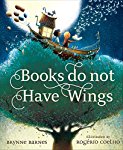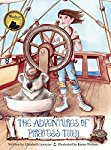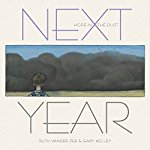I freely admit that I enjoy watching films and programs on the television and on my ipad. I have a Kindle, and I use it all the time. However, I am still a devotee of books. I buy them regularly, and there are books in practically every room in my home. I know that books can offer me things that I cannot get from a screen, and I relish my reading time. Books educate, they comfort, and they entertain. They open doors to different worlds, and show us that there are so many possible paths to take in life.
Today I bring you a picture book that celebrates all the things books give us.
 Books do not have wings
Books do not have wings
Today I bring you a picture book that celebrates all the things books give us.
 Books do not have wings
Books do not have wings
Brynne Barnes
Illustrated by Rogerio Coelho
Picture Book
For ages 5 to 7
Sleeping Bear Press, 2017, 978-1-58536-964-5
When you pick up a book what do you see? You see
something that has a cover, a spine, and pages. You know that the book has a
writer and perhaps an illustrator as well, and that it has readers “like you.”
Perhaps you think that this is ‘just’ a book, but you would be wrong. There is
nothing ‘just’ about a book, because a book “can do anything / that you want it
to do.”
Though a book
technically does not have wings and does not have an engine or other remarkable
moving parts, it still is a marvelous “work of art” that “plumps up your
thinker / and fills up your heart.” It is more than a cover, a spine, and
pages. It is “more than a book.”
Through its
words a book can become a ship that takes you on a grand adventure with
pirates. It can dip under the ocean waves and we can take a journey in a
submarine, exploring fascinating undersea worlds that are full of extraordinary
sea creatures.
With a book for
company we can watch a witch stirring her brew, and gaze upon a dragon that is
resting on a cloud deep in slumber. We can marvel as flocks of fairies dance
around the leaves of trees in a forest.
Perhaps the most
amazing thing of all about a book is the fact that if you have the wish to
explore the book with an open heart and mind, and have eyes that are eager to
discover what comes next, a book can be just about anything,
In the glorious
picture book a lyrical rhyming text is paired with rich and magical
illustrations to take readers on a journey that shows them that books are
extraordinary things. They should not be taken for granted, nor should we ever
think that they are ‘just’ a book. Once we open them up and start to read, the
stories and narratives in books can take us into marvelous worlds that are ruled
by the imagination, or knowledge, or both.









